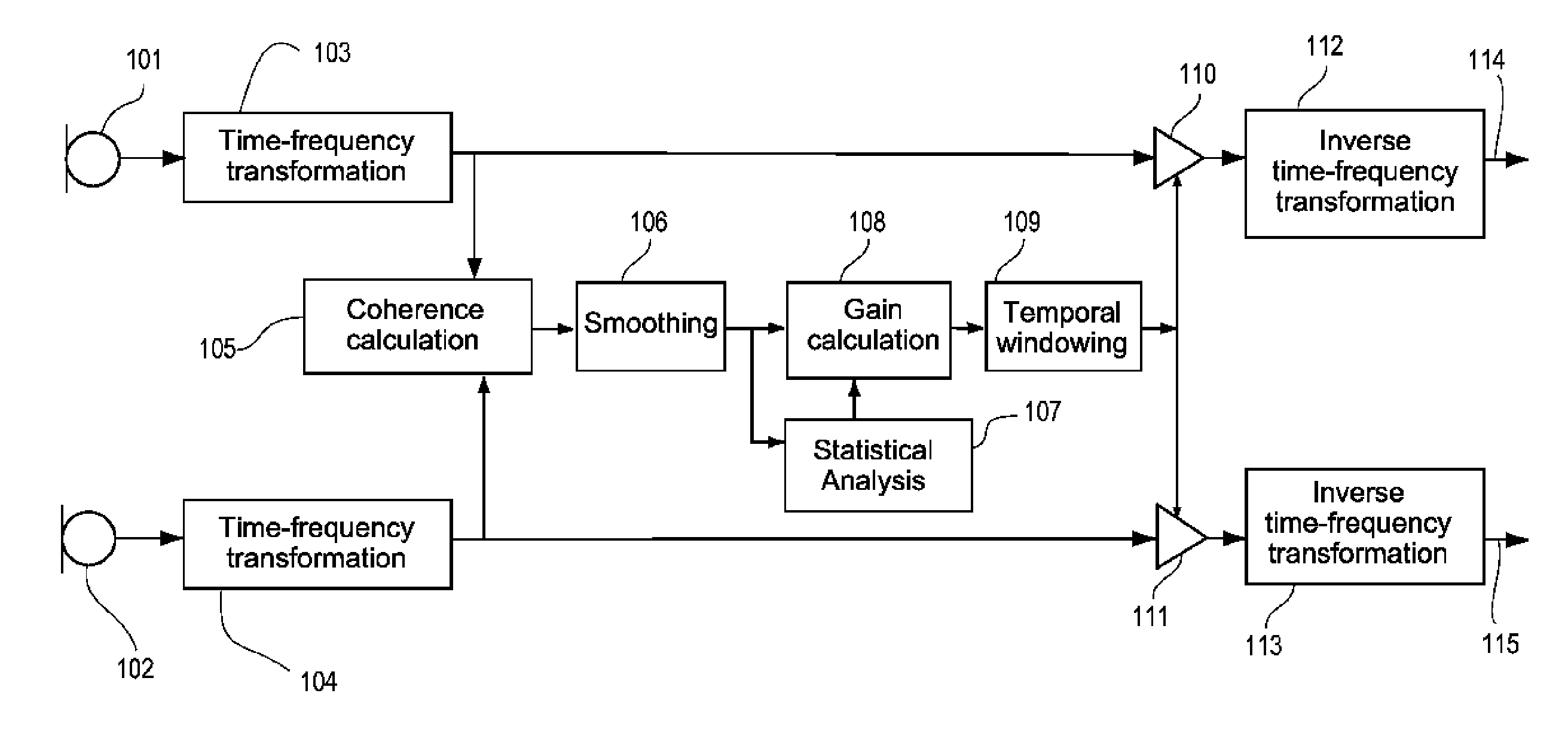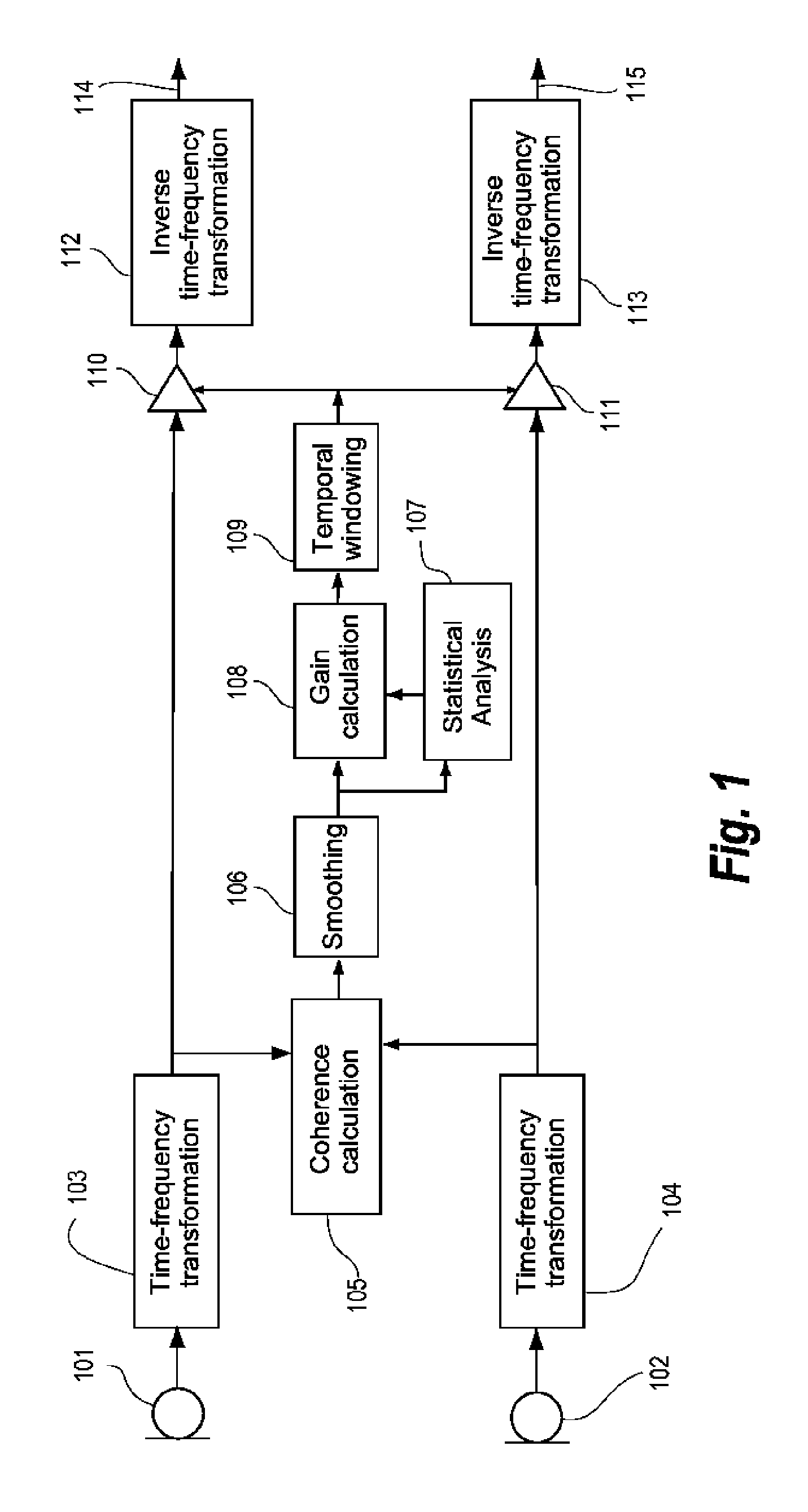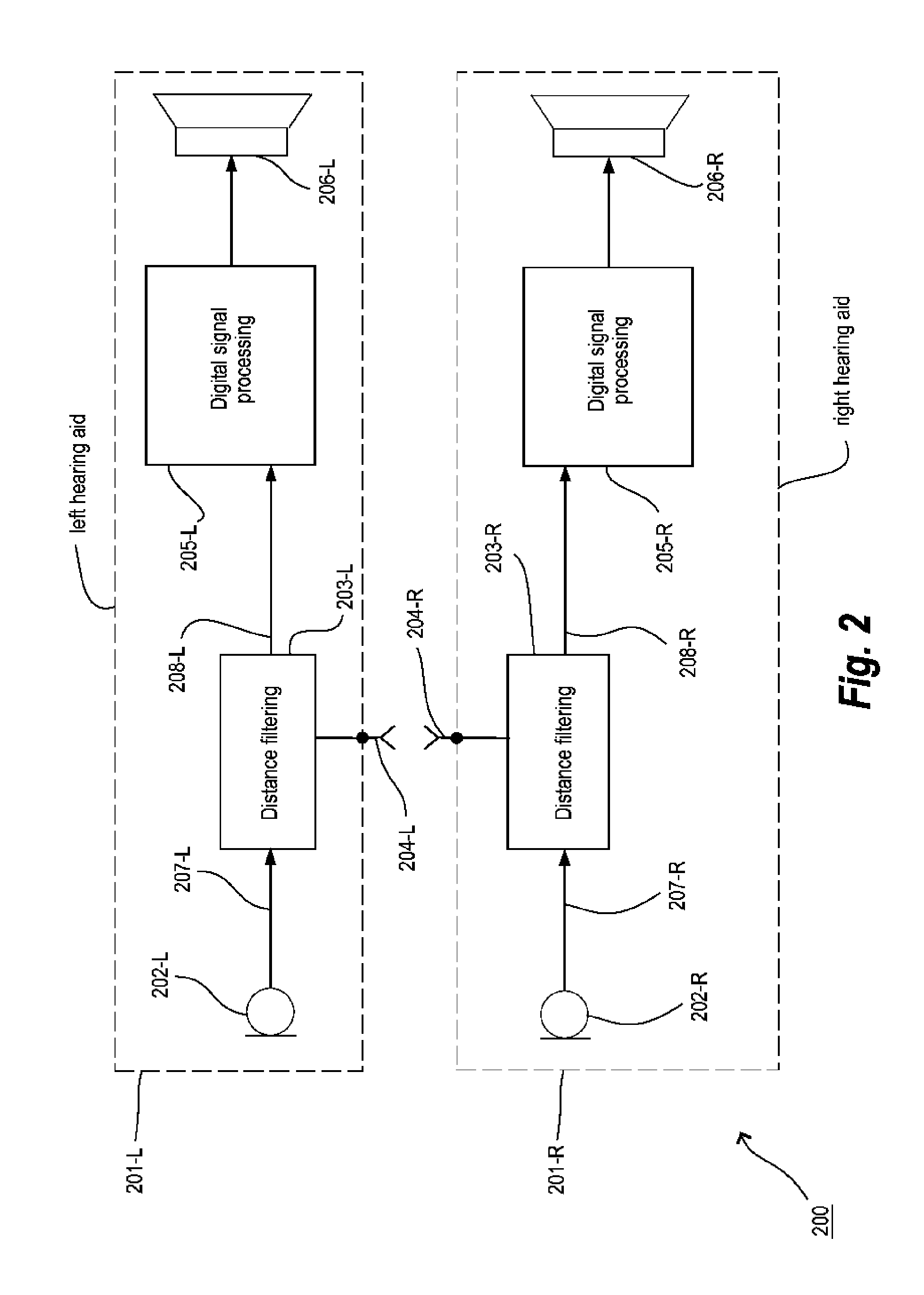Method of signal processing in a hearing aid system and a hearing aid system
a signal processing and hearing aid technology, applied in the direction of transducer details, electrical transducers, electronic input selection/mixing, etc., can solve the problem of not efficiently suppressing the noise of interfering speakers, and achieve the effect of suppressing nois
- Summary
- Abstract
- Description
- Claims
- Application Information
AI Technical Summary
Benefits of technology
Problems solved by technology
Method used
Image
Examples
Embodiment Construction
[0026]In the present context the term interaural coherence, or just coherence, represents a measure of the similarity between two signals from two acoustical-electrical input transducers of a hearing aid system, where the two input transducers are positioned near or at each of the two ears of the user wearing the hearing aid system. The interaural coherence can be defined as the normalized interaural cross-correlation in the frequency domain.
[0027]In the present context the term time-frequency transformation represents the transformation of a signal in the time domain, such as an audio signal derived from a microphone, and into the so called time-frequency domain. The result of the time-frequency transformation is denoted a time-frequency distribution. Using the inverse transform the time-frequency distribution is transformed back to the time domain. The concept of time-frequency analysis is well known within the art and further details can be found in e.g. the book by B. Boashash: ...
PUM
 Login to View More
Login to View More Abstract
Description
Claims
Application Information
 Login to View More
Login to View More - R&D
- Intellectual Property
- Life Sciences
- Materials
- Tech Scout
- Unparalleled Data Quality
- Higher Quality Content
- 60% Fewer Hallucinations
Browse by: Latest US Patents, China's latest patents, Technical Efficacy Thesaurus, Application Domain, Technology Topic, Popular Technical Reports.
© 2025 PatSnap. All rights reserved.Legal|Privacy policy|Modern Slavery Act Transparency Statement|Sitemap|About US| Contact US: help@patsnap.com



